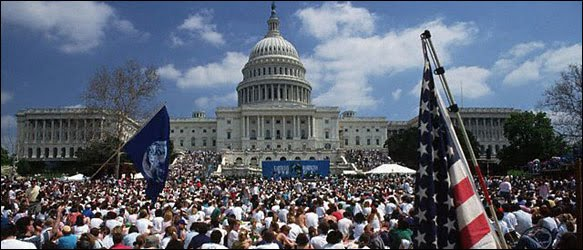The History of Earth Day
September 14, 2018
Back before 1970, Earth Day was just an idea budding in the heads of early environmentalists– a concept that formed into an internationally recognized holiday. April 22nd, 1970 marked the first of many subsequent days that celebrated the earth, while also spreading awareness of human-caused harm.
Let’s set the scene. By the end of the 1960s, the counterculture movement was peaking– Vietnam protests were at an all-time high, and environmental awareness was just entering the minds of Americans. Silent Spring by Rachel Carson was released in 1962, and “more than 500,000 copies in 24 countries [were sold]… beginning to raise public awareness and concern for living organisms, the environment, and links between pollution and public health” (Earth Day Network). People were becoming increasingly aware of dangers present in the environment: there were no laws in place that could prevent industries from spewing smoke, dumping waste, destroying habitats; change was necessary.
Meanwhile, Wisconsin Senator Gaylord Nelson recognized the growing concern that Americans had about the lack of regulations on environmental destruction from commercial, industrial, and residential zones alike. Nelson was inspired by an oil spill that occurred in Santa Barbara in 1969, which sprung him into the limelight of the green revolution. He then organized a national teach-in, which transformed into the Earth Day that we know today.

Nelson’s work led 20 million people into a protest which triggered Congress to create the Environmental Protection Agency (or EPA): a governmental agency that has worked to regulate gas emissions, water pollutants, and more. The Clean Air Act, Clean Water Act, and the Endangered Species Act all fell into place as well, with high levels of bipartisan support (Earth Day Network). These different structures have helped to shape environmental regulations we have today and have prevented a large degree of environmental destruction from occurring.
1990 represented a year of significance in the history of Earth Day: on the 20th anniversary of the first celebration, millions of people worldwide gathered together to celebrate the earth and advocate for change– the largest celebration of the holiday to date. That year also included a revision and lengthening of the Clean Air Act. Alongside 1970, 1990 is considered to be the most influential year in the history of Earth Day and has inspired celebrations that followed.

Photo via New York Times
Today, Earth Day represents hope to people all around the world: hope for change, for peace, for sustainability. Year in and year out, Earth Day serves as a reminder to citizens and lawmakers all around the world that we need to treat our earth with kindness and advocate for legislation to protect its beauty. In years to come, look back upon the leaders who worked in 1970, 1990, and other years to make Earth Day the holiday it is today,
Sources:
www.history.com/topics/holidays/earth-day
www.lib.niu.edu/1990/ip900305.html
https://www.greenbiz.com/blog/2010/04/22/remembering-earth-day-milestones-1970-1990





















































































































































